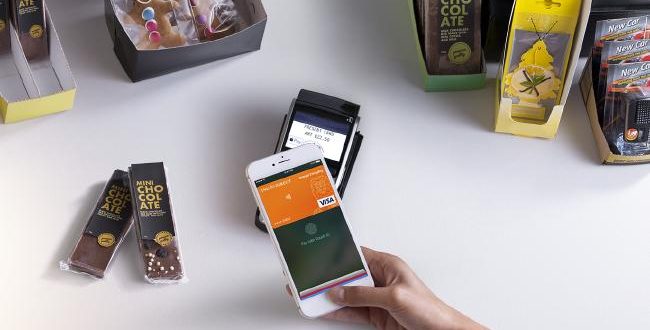Payments are evolving, which shouldn’t come as a surprise to anyone who owns a smartphone. From Apple Pay to Samsung Pay and Android Pay, Australians are now more empowered than ever to leave their wallets at home and go for a digital solution.
While the benefits of mobile wallets have been heavily sold to consumers, its businesses who have a golden opportunity. At the centre of this is the digitisation of loyalty programs.
Already, Australia is a nation of loyalty program lovers. The 2016 Loyalty Lens study conducted by the global loyalty and data driven marketing company, Aimia, shows that 90 per cent of Australians hold at least one loyalty card. Supermarket schemes are on top with 69 per cent penetration, followed by airlines (47 per cent) and department stores (33 per cent).
At the same time, Australian consumers can be fickle. When businesses get loyalty wrong, consumer trust can quickly erode. There are also many vocal detractors of loyalty programs and data collection, who question the value customers are receiving and the security of these programs.
In short, the pressure on CMOs and marketing divisions to get loyalty right has never been higher. At the same time, the opportunities are significant with technology transforming how businesses build and enhance customer relationships.
Here are some key things to keep in mind as digital loyalty programs gain momentum in 2017:
Increasing engagement through convenience
Customers have a habit of joining loyalty programs spontaneously at places like airline check-in desks, when making a purchase in-store, at a hotel front-desk or when shopping online. The loyalty industry’s challenge therefore is not the first transaction — it is keeping people engaged to use their loyalty card every time they shop with the brand.
Through services like Samsung Pay, it’s already possible for customers to upload almost any loyalty card into their smartphone wallet. This convenience factor shouldn’t be overlooked. The simple tap of a phone rather than fumbling through a wallet is a significant behavioural change that will drive consumer engagement.
It’s not just about making it easier for customers to collect rewards; barriers need to be reduced when it comes to redemption. Digital loyalty can positively remind customers of their growing rewards balance and provide instant rewards that can be redeemed with the click of a button or surprise and delight engagement activity ‘earned’ at the swipe of a screen.
Integrating with the mobile wallet provider
While encouraging users to think about their digital loyalty card every time they shop is important, full integration with the whole payment experience is the next frontier. Tracking all loyalty cards in one place, intuitively redeeming points without having to even select your loyalty card and having the ability to exchange points across multiple programs is where this technology is going.
To achieve this, partnerships and an open business model are key. Mobile wallet providers are keen to collaborate with brands as they recognise that loyalty is more than just an add-on feature. In fact, it’s pivotal to their overall strategy of entirely replacing the physical wallet.
One of the most exciting aspects of this technology is location-based offers — the ability to understand customers’ habits, preferences, and location to ensure they receive the right deals, at the right time. To put this into perspective, imagine you’re a major sporting club 30 minutes from kick-off, but a number of seats remain unsold. Using location-based offers, it would be possible to offer discounted tickets to customers who have opted in and are within 5-kilometers of the stadium.
This type of technology, of course, needs to be offset with concerns around privacy and security, which, at 50%, is the largest barrier for Australians adopting digital loyalty programs as shown by Aimia’s Loyalty Lens research.
Overcoming this means understanding your customer. Businesses need to determine who they want to bring into the store or onto the website and design a loyalty program for them, rather than going for a one-size-fits-all solution.
Seeking a competitive edge
It pays to be first. For example, in 2016, we saw ANZ aggressively advertise on the back of being the first bank to pair with Samsung Pay, Apple Pay and Android Pay. The result … a positive impact on customer acquisition.
For brands and retailers, being at the forefront of digital loyalty is a selling point. This is backed-up by 2016 Nielsen research, which indicates digital loyalty-program tools and mobile-wallet integration is particularly appealing in the Asia-Pacific region (78 per cent).
If Uber and Airbnb have taught us anything in recent years, it’s that Australians are ready to be disrupted. The brands that capitalise on digital loyalty early will have a point of difference from their competitors.
They will also be ahead of the curve in allaying their customers concerns about data exchange and security. This is a journey all brands need to go on and the sooner that trust is built, the easier it will be to tailor loyalty to individuals’ preferences.
The year ahead promises to be a game-changer for loyalty, and with the world-leading mobile wallets now available locally, it’s a win-win for consumers and businesses in Australia.
Paul Smitton is Managing Director Australia & New Zealand, Aimia.
Reader comments on this site are moderated before publication to promote lively and civil debate. We encourage your comments but submitting one does not guarantee publication. We publish hundreds of comments daily, and if a comment is rejected it is likely because it does not meet with our comment guidelines, which you can read here. No correspondence will be entered into if a comment is declined.





